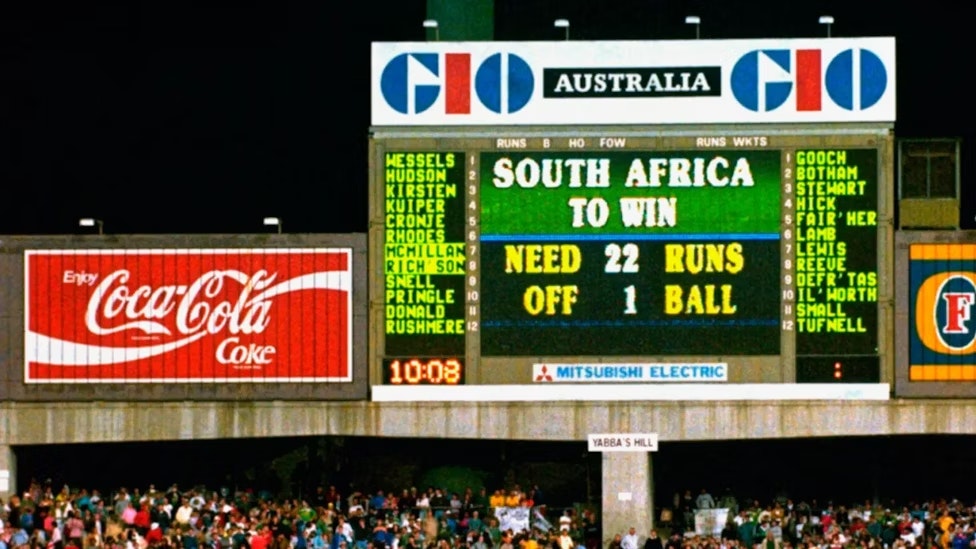 ON THIS DAY
ON THIS DAYHere's a classical case of the scoreboard not telling you the whole story
We have grown up on the legend that South Africa were robbed in the 1992 World Cup semifinal when the rain rule adjusted their target to 22 runs off 1 ball from the position of requiring 22 runs off 13 balls. While it may sound like unfair treatment towards the Proteas, a deeper look will tell you that they were partly themselves to be blamed for the situation while England deserved to win.
Let’s understand the rain rule first to begin.
To clear the confusion, it wasn’t the infamous DL method (now known as DLS method), which only came into effect in 1997. This World Cup had a special rain rule. According to this, the least productive over in the first innings will decide the target reduced in the second innings.
For example, if the least scoring over in the first innings is 2 runs, then in the case of an over reduction in the second innings, the target would be reduced by 2 runs. If the second least scoring over is 3 runs, then a total of 5 runs will be deducted from the original target in case of a two overs reduction. SA bowled two maidens that day while bowling first. Hence, when two overs were reduced, no run was deducted, and the target was evaluated from 22 off 13 balls to 22 off 1 ball. However, this was unfortunate for South Africa as it was based on something they did right.
HERE IS WHAT THEY DID WRONG
The rain rule clearly favoured the sides batting first. The forecast indicated chances of rain at night in Sydney. Yet, the South Africa skipper, Kepler Wessels elected to bowl. He said, "It is a risk we are prepared to take." Until this fixture, they had won all three out of three games, batting second in the tournament. In comparison, their win percentage batting first lingered at 40%.
But little did Wessels know that fate would never be on their side in the World Cup knockouts.
The second mistake was that South Africa were slow in completing their overs. There was no extension in time play during that World Cup due to broadcasters' stubborn attitude. South Africa bowled only 45 overs in the allotted three and a half hours and that was all they bowled in the first innings. They were so slow it almost looked intentional.
England never had an idea how many overs they will get to bat, eventually not knowing when to accelerate. Meanwhile, South Africa knew they had 45 overs to bat. In the commentary box, Ian Chappell mentioned, "Now that is quite an advantage to the team that has offended." To make it worse, the Protea bowlers also delivered nine wides and six no-balls, bowling 15 extra deliveries and conceding 23 extras in total.
Lastly, the broadcasters also had a role to play. There was a reserve day for that semifinal, but they insisted on the game ending that night.
WHAT HAPPENED
Needing 22 off 13 balls, the players went off the field due to heavy rain. When they returned, the rain rule truncated the target to 22 off 7 balls. By the time the players arrived on the pitch, the giant screen showed the deficit to be 22 off 1 ball. The players were told about it on the field.
Brian McMillan, on strike for the last ball, trudged off for a single and walked away in disgust, though he shook hands with the England skipper, Graham Gooch, in a peaceful manner. It low-key reminded one of the helpless Brian McKechnie facing the underarm delivery in 1981.
The crowds booed at England but none of it was their fault. To South Africa’s credit, they stepped out to shake hands with England. They probably knew they were at some fault, and despite the over-reduction, they might have had a chance to win if they had bowled their overs in time.
THE COINCIDENCE
The DL method wasn't there. But interestingly, when calculations were made for that game after the DL method became operative, it was found out that South Africa's target after that rain break would still have been 22 runs off 1 ball.
All this happened on this day in 1992. 32 years down the line, luck has still evaded South Africa in knockout games, and they are still looking for a World Cup. Much like this instance, rain has hindered them on numerous occasions, but largely, they have had themselves to blame.